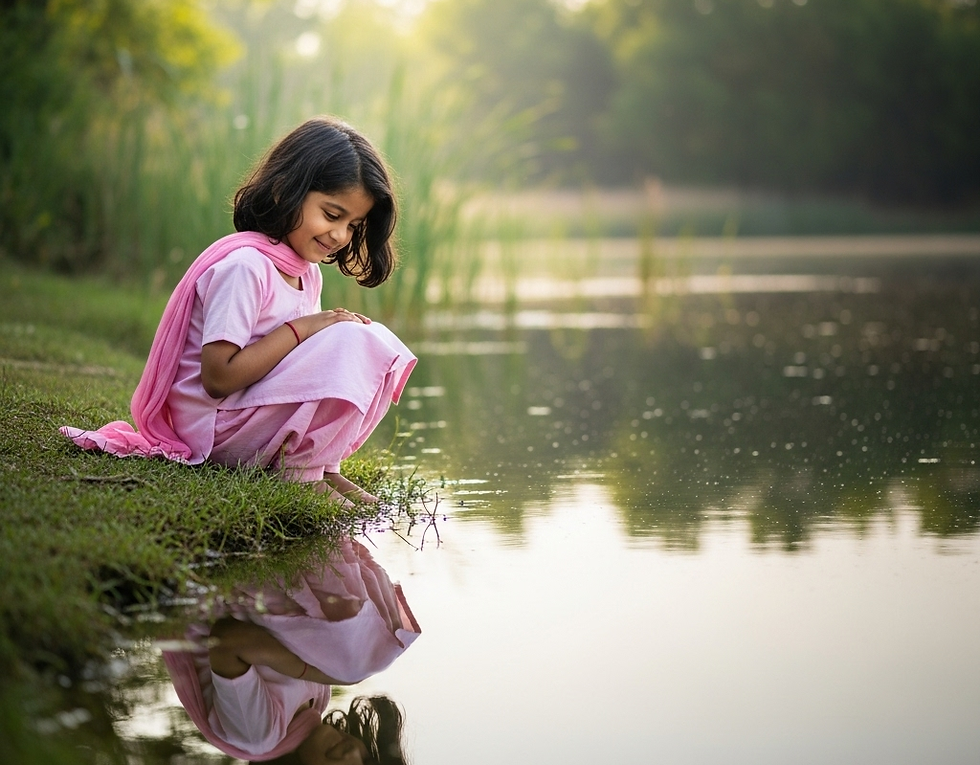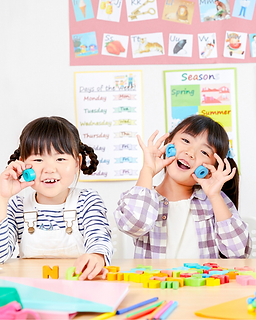
16 June 2025
Where Imagination Meets Mindfulness: Raising Calm, Confident Kids
Have you ever watched your child pretend they’re flying through space, swimming with dolphins, or turning into a superhero? That’s not just imagination—it’s the power of visualization. And when we guide kids to use this incredible power mindfully, it can help them feel calmer, more confident, and better able to handle big emotions.
Welcome to the world of mindful visualization—a tool that helps children unlock their inner wisdom in a way that’s fun, soothing, and effective.
What Is Visualization (and Why Does It Matter for Kids)?
Visualization is simply the act of picturing something in the mind. For kids, it’s a natural part of their day—they imagine stories, create characters, and dream about being explorers or artists.
In mindfulness, visualization becomes a helpful superpower. It allows children to:
Calm down during stressful moments
Build confidence before a big event (like a test or performance)
Connect with their emotions in a gentle way
Sleep better at night
Find comfort when they feel sad or overwhelmed
Research shows that when children visualize calm, positive scenes, their brains respond as if those things are really happening. That means a peaceful forest or a warm hug in the imagination can help their bodies and minds feel safe and regulated.
The Science Made Simple
Here’s something amazing: the brain doesn’t know the difference between imagining something and actually experiencing it. That means if your child visualizes themselves being brave, kind, or relaxed—the brain practices those feelings as if they were real.
Think of it like mental rehearsal. Athletes do it. Musicians do it. And now, kids can too.
How Visualization Supports Mindfulness
Mindfulness helps kids stay present and aware of what’s happening inside and around them—without judgment. Visualization supports this by giving them something gentle to focus on.
Here are five ways visualization boosts mindfulness:
1. The Calm Place Technique
Children picture a peaceful place—like a cozy blanket fort, a beach, or a sunny treehouse. Their breathing slows, and their bodies feel safe.
2. The Worry Float
Kids imagine placing a worry or fear on a leaf, then watching it float away down a stream. It teaches them to notice, then let go.
3. The Inner Hero
They picture themselves as strong, kind, or brave—helping someone, speaking up, or trying something new. It builds inner confidence.
4. The Emotion Garden
Each emotion becomes a plant. They “see” what’s growing, name it (like “this is sadness”), and water it with care. It encourages emotional awareness.
5. The Goodnight Balloon
Before bed, they visualize placing any leftover energy, worries, or thoughts into a soft balloon and releasing it into the stars.
Tips for Parents: Helping Your Child Use Visualization Mindfully
You don’t have to be a mindfulness expert to help your child tap into their imagination in calming ways. Here’s how to start:
Make it a moment: Set a quiet space—just 3–5 minutes is enough. Bedtime or after school is ideal.
Use simple prompts: “Close your eyes and picture a cozy cave where you feel totally safe. What does it look like? What do you hear?”
Let them draw it: After visualizing, ask them to draw what they saw. This helps them process the experience.
Join in: Try it together! Children love when parents participate. It also models emotional care.
Name the feeling: Help them gently describe what they felt—calm, safe, curious, brave.
Final Thoughts: Wisdom Comes from Within
Visualization isn’t just pretend—it’s practice. When kids learn to close their eyes and visit their calm place or imagine their strong self, they’re learning one of life’s most important skills: how to care for their own mind and heart.
In a busy world full of noise, visualization helps children hear their inner wisdom. And the more they practice, the more confident, calm, and connected they’ll become.
Let your child’s imagination be their greatest ally. Through mindful visualization, they’ll discover a world of peace, courage, and self-love—right inside of them.
You might also like...
3 Fun Ways to Teach Communication in Classrooms
The Surprising Psychology of Puzzles
Why Mindfulness Worksheets Help Kids Regulate Emotions


